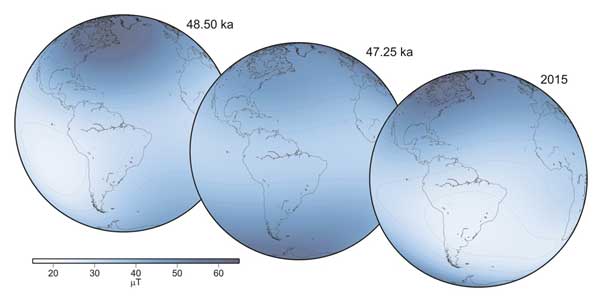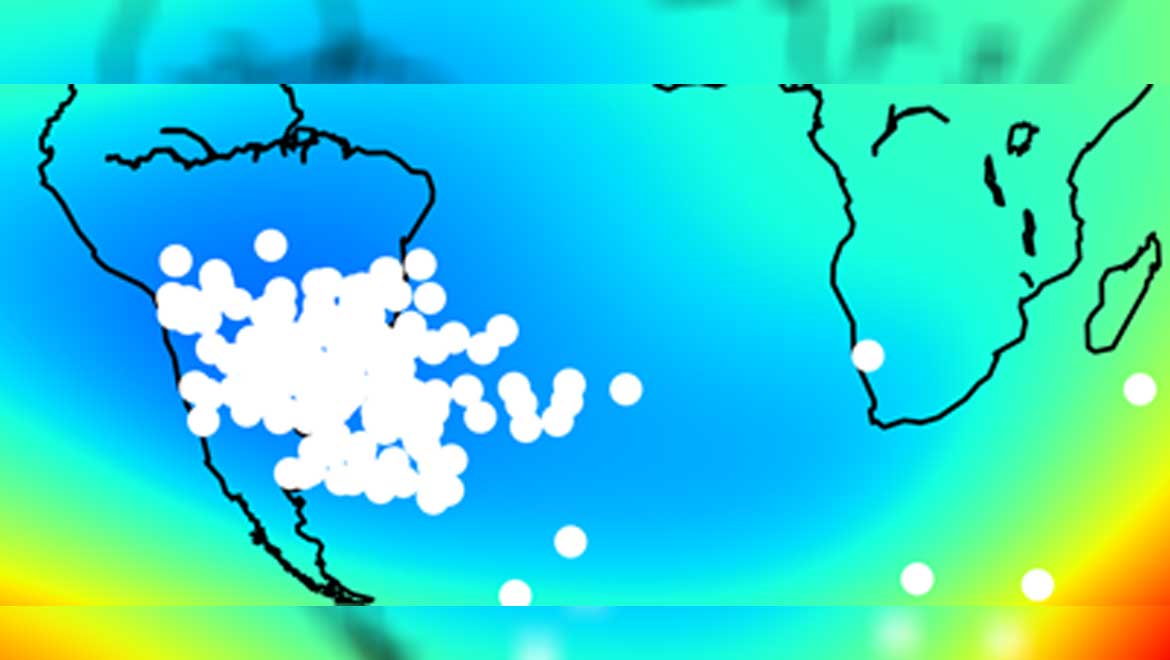The Earth generates a powerful magnetic field, which mainly functions to protect us and everything else on it from dangerous cosmic rays. This force has proven itself very reliable (assumption made through scientific observation), over time.
Scientists perceive the magnetic field as constant and monolithic. However, this is not the case.
The planetary magnetic field has, in fact, demonstrated remarkable fluctuation over the years, especially in certain parts of the globe.
One location where the magnetic field was observed to be particularly anomalous was the southern Atlantic Ocean. This detection has led many experts to speculate that the entire magnetic field could probably reverse itself.
But, could this really be the case?
Instances of Reversal of Earth’s Magnetic Field
The Earth's magnetic field has, in fact, reversed itself once before. This event entailed the 'switching' of the magnetic poles, so the North Pole became the South Pole and vice versa.
The data available to scientists led them to conclude that this phenomenon, known as the Laschamp excursion, occurred approximately 41,000 years ago.
The excursion was obviously very short-lived in geological terms - it lasted only about a thousand years before the poles re-asserted what we think of as their normal status.
The Laschamp event is a prominent example of what happens when the Earth's magnetic field is significantly altered. However, the vast majority of such fluctuations are not significant.
The South Atlantic anomaly is another example of a significant 'blip' in the magnetic field. Although, there is no evidence that it will lead to a modern-day Laschamp-like excursion.
Another Magnetic Field Reversal Likely?
A team of researchers from the GFZ Geosciences Research Center at the Helmholtz Center in Potsdam, in collaboration with the Universities of Nantes, Liverpool, and Iceland, have evaluated the anomaly and reported that another pole-switching event is not likely.
These scientists assessed the relevant data on magnetic field activity over the last 50,000 years to reach their conclusions. Their findings are published in an April issue of journal, Proceedings of the National Academy of Sciences.
The investigators of the research compared the South Atlantic anomaly with many other significant magnetic field abnormalities over the relevant time period.
They found that all the fluctuations, most similar to the Atlantic feature, were not followed by pole-switching events. In other words, phenomena such as the Laschamp event were more likely to have been precipitated by another type of magnetic field disorder.
On the other hand, the Laschamp excursion was also likely to have been preceded by a significant drop in the normal strength of the magnetic field, which is also a feature of the South Atlantic Anomaly.
Palaeological and geomagnetic data were used, that were derived from seismological and geological samples taken worldwide. This information was regarded as high-quality, especially when it applied to up to 50,000 years in the past.
The samples were considered important as minerals with magnetic properties were found in them, and they provided an accurate record of the total magnetic field, over time.
This natural database for the last 30 to 50 millennia is particularly detailed. Such large volumes of data allowed research teams, such as the present one, to assess the South Atlantic Anomaly. Also, it helped in constructing effective models of the magnetic field and its significant fluctuations over this time period.
The researchers reported that the Anomaly most closely matched two others, both of which also occurred in the southern Atlantic Ocean. Both of these events exhibited reduced field strength but returned to relative normality again, in time.
Nevertheless, it remains a concern.
This phenomenon is a significant weak point in the global magnetic field, where the risk of exposure to dangerous radiation is greater compared to elsewhere on Earth. In addition, satellites that come in contact with the force are more susceptible to blackouts.

This image compares the Anomaly in 2015 with two others observed as having occurred 47,250 and 48,500 years ago, respectively. (Source: M. Korte/GFZ)
The observation of the South Atlantic Anomaly has led to fears that it will be followed by an inversion of the normal magnetic poles in the extreme north and south of the planet.
However, a new study has demonstrated that, by modeling all other similar anomalies in the past and comparing them with other magnetic field events, this is not likely to happen.
But, the occurrence's imminence still presents a problem for satellites and aeronautical vehicles that need to pass through the southern Atlantic Ocean.
Top Image: The image indicates radiation-induced satellite blackouts (white dots) associated with the South Atlantic Anomaly between 2014 and 2017. (Source: I. Michaelis, GFZ)







No comment